The historical development of winemaking in data: basic information and interesting facts for every wine lover
In order to understand better the evolution of winemaking in our country and place it in its overall historical context let us briefly go over the key wine-related events.
276–282 The Roman Emperor Probus
The Emperor Probus annuls the edict of Emperor Domitian dating from 91 AD and orders the renewed planting of vines in the colonies north of the Alps. A great number of vineyards are established in Austria. The Roman garrison at Vindobona, the "Legio Decima Gemina, Pia Fidelis" builds its northernmost base on the Roman Hill, beneath the Pálava hills, near the southern borders of what is now Moravia, and plants the first vineyard on Pálava. During excavations of a walled building enclosure of the 10th Legion in the former commune of Mušov in 1926, a pruning knife was found. It was 28 centimetres in length with a blade 10 centimetres long, and was for use in the vineyards.
A great number of vineyards are established in Austria.
833–906 The Great Moravian Empire
Archaeological excavations of Slav settlements uncovered numerous pruning knives and grape seeds, confirming the existence of developed viticulture in the Great Moravian Empire.
892 The First Wine in Bohemia

According to legend the Great Moravian Prince Svatopluk sends the Bohemian Prince Bořivoj a barrel of wine to celebrate the birth of his son Spytihněv. Bořivoj's wife Ludmila sacrifices a little of the wine to the goddess of the harvest, Krosyně, while making a plea for abundant rain. Her wish comes true, the crop is saved and Bořivoj together with Ludmila adopt Christianity, later planting the first Bohemian vineyards around Mělník. The first vineyard was, apparently, between the communes of Nedomice and Dřísy. Saint Wenceslas, their grandson, later learns how to cultivate vines in this vineyard, press the grapes and make wine. He is honoured by Czech vintners as "Supremus Magister Vinearum" (the supreme burgomaster of the vineyards) and every year a wine festival is held in Mělník on feast of St. Wenceslas at the end of September. Today the Saint Wenceslas vineyard is being renewed and replanted with vines by small local viticulturists.
1057 A Deed of Covenant by Prince Spytihněv II
The rapid expansion of the vineyard area in the warmest parts of the Czech lands comes about by the deed of covenant proclaimed by Prince Spytihněv II to the Collegiate Church of Saint Stephen in Litoměřice. This lists the gifted vineyards in the environs of the town as well as the names of wine-makers, including vintners bearing such colourful-sounding Czech names as Kozel, Stojan, Zvan, Daleš, Čecen, Dras, Bachuch, etc. This is the first written record of vineyards and vintners in Bohemia.
1101 First Written Records Relating to the Vineyards of Moravia
In the foundation charter kept in the Benedictine Abbey of Třebíč is a reference to the vineyards being bequeathed in Moravia.
1195 Foundation of the Premonstratensian Abbey of Louka near Znojmo
This abbey was subsequently responsible for the planting of vineyards in the region of Znojmo.
1202 Cistercians in Velehrad
Monks of the Cistercian order from the monastery in Velehrad in the region of Uherské Hradiště plant vineyards in Skoršice near Hustopeče. By 1220 they own Přítluky and its vineyards and by 1227 Kobylí along with its vineyards.
1251 Cistercians in Žernoseky
Smil of Lichtenburg sells the commune of Žernoseky to the Cistercian Abbey in Altzel near Meissen. The Cistercians plant large areas with vines in Velké Žernoseky and excavate cellars into the rocks. The wine they produce is then transported along the river Elbe to their own abbeys in northern Germany.
1281 The Oldest Known Written Text Relating to Land Rights
The laws relating to the church property around the town of Kroměříž are established. These are referred to as the Bergrecht laws ('Berg' meaning 'mountain' in German and are related to land taxes).
13th Century
Thanks to the monasteries as a whole, large vineyard areas are constantly being established in which grape varieties imported from France and Germany are planted and the training and pruning methods of these countries adopted. Such vineyard groupings are much easier to protect against thieving marauders and wild amimals. At the same time it is easier to collect tithe payments, dues and taxes during the harvest, as well as making for better maintenance of the vineyards.
Thanks to the monasteries as a whole, large vineyard areas are constantly being established
1249 The Liechtensteins in Mikulov
With their arrival the Liechtenstein family begins colonising the Mikulov region. Numerous vineyards are planted around the Pálava Hills.
14th Century
1309 Bergrecht Laws in Falkenstein near Mikulov
The Falkenstein Bergrecht laws and vineyard rules as applied in the district of Mikulov become the model for all legal regulations governing viticulture and the production of wine in many Southern Moravian wine communes. At this time Falkenstein also serves as the Supreme Appeals Court in vineyard disputes for those villages under the jurisdiction of the Falkenstein Bergrecht.
1325 Limited Outlet-Tap-Room for Austrian Wine in Brno
The area under vine at the end of the 13th and beginning of the 14th centuries is fast expanding throughout Moravia. For those burghers of Brno, who own vineyards not only in the area around Brno but also in Židlochovice, Hustopeče and also in Mikulov and Znojmo, Austrian wine has become very serious competition. At their request King John of Luxembourg decrees on 5th April that the sale and serving of Austrian wines is to be restricted. From harvest until Easter only the wines produced by the citizens of Brno are allowed to be served, thereby outlawing those from Austria. Wine tasters are appointed in Brno to establish the origins of all wines brought into the city. They are posted right at the town gates whence they only permit those wines having Moravian origin to continue into the town; and at the same time they determine the price at which these wines may be sold. This is the embryo of the Wine Commissioners Guild, whose function would later be performed in Moravia by wine brokers. The brokers would also function as wine forwarders, collecting barrels of wine from the producers and transporting them to the cellars of the purchasers. These individuals were said to have the best overall knowledge as regards the quality and quantities of wine in the cellars of Moravia and for this reason they were claimed to be the best intermediaries in the buying and selling of wine.
Wine tasters are appointed in Brno to establish the origins of all wines brought into the city.
1355 Vineyard Rules for Moravia and the Vineyard Register
The Moravian Margrave Jan Jindřich publishes sample vineyard rules for Moravia and the town council of Brno issues a decree on the obligatory registration of vineyards by all citizens of Brno in the taxation register so that the town may take its dues off them. Those who register their vineyards may export his country wine to Brno without further taxation.
1358 Decree on Vineyard Plantings and Vineyard Rules of Charles IV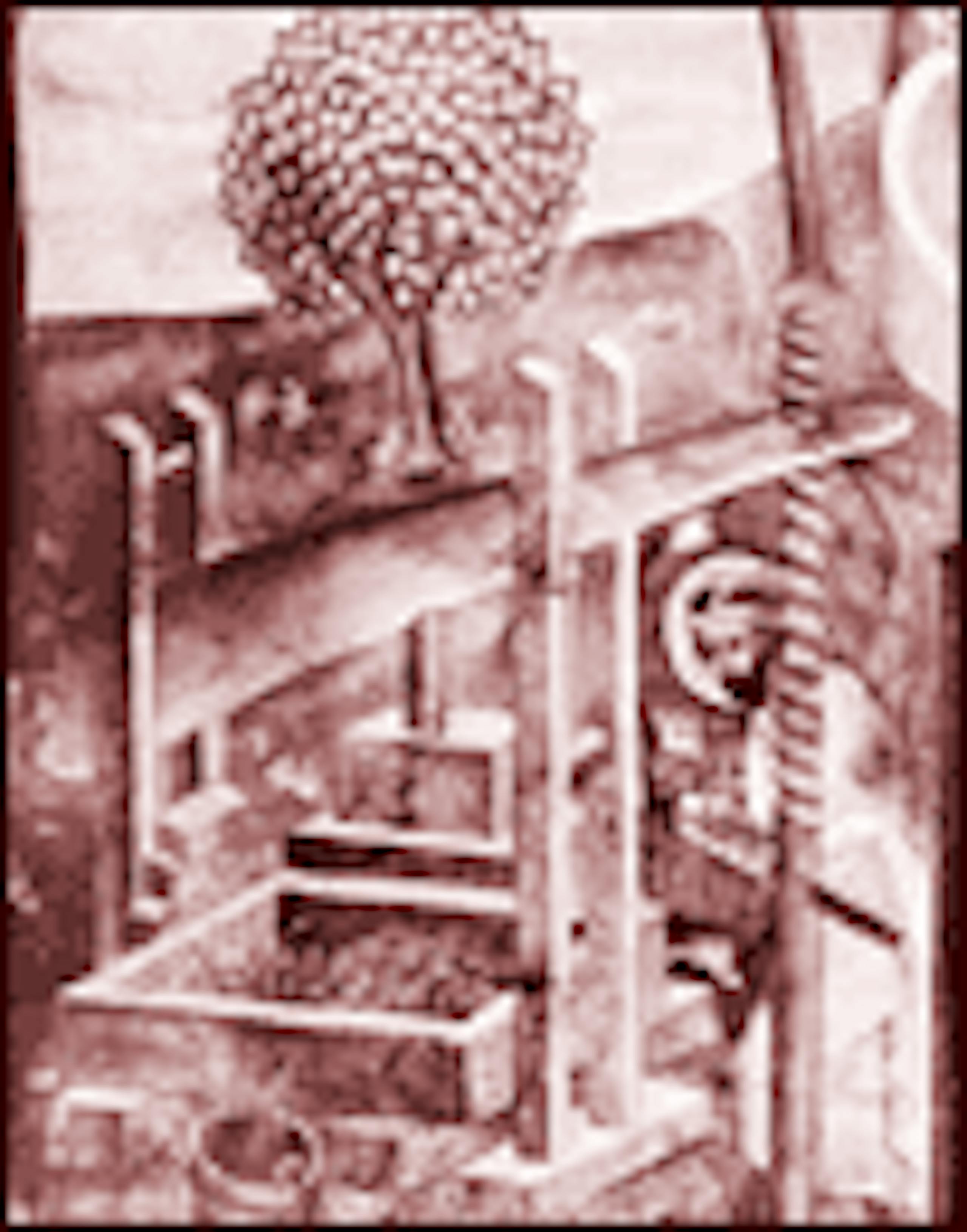
On 16th February Charles IV, King of Bohemia and Holy Roman Emperor, issues a decree for the city of Prague on vineyard plantings and related regulations which, from 12th May, will come into effect in all the royal towns of Bohemia. In the decree he states, "...We, of our own free will and in our unending kindness and with the help of God, in order to improve the present state of our kingdom and all its citizens, decree: The planting of vineyards on all lands facing noon in a distance of 3 miles from Prague. Whosoever is the owner of such a slope or site is ordered to commence vineyard planting within 14 days of the publication of this privilege. Whosoever does not wish or is unable to plant vineyards is obliged to pass the property on to a person designated by the burgomaster. Those persons who plant vineyards are, from the day the planting commences, to be exempt from all taxes, dues and tithes for a period of twelve years. Beginning with the13th year it will be incumbent upon the vineyard holder to surrender to the landlord a tithe payment and to the king from each vineyard a half-tub (30.5 litres) annually. All vineyards have to be of an equal size of 16 rows, (i.e. 75.6 metres) in length and 8 rows (ie.37.8 metres) wide (one vineyard total surface area is equivalent to 2,865 square metres). All vineyards planted in the year 1358 will be declared forever free of "ungelt" (customs duties) and all other land taxes. The aldermen of Old Town of Prague will select the burgomaster for Prague and for all royal towns. It is forbidden to all persons, whether high-born or low, to damage the vineyards. Any person found causing damage to the vineyards or their vines, whether on horse or on foot, or making a way through the vineyards, will have his right hand cut off unless he pays a ransom of 20 "stacks" of Bohemian Groschen. Whomsoever is seized during the night will forfeit his head and his property will be declared confiscate by the Burgomaster. Should the thief be killed during his intrusion, then his killer will forfeit no greater sum than two hellers which he shall place upon the body of the dead man. Any disputes arising will be judged by the Old Town Council of Prague."
1368 Hustopeče, Mikulov, Znojmo - the Largest Wine Centres in Moravia
Hustopeče, which receives its own vineyard rules in 1362, already has at this time 20 vineyard sites. Most of these have been planted by burghers of Brno who, according to the estate and property inventory dating from 1355, have invested up to 28% of their personal fortunes into the project. As evidenced by later inventories, Brno citizens are investing more and more capital in their vineyards. In 1477 this investment represents 41% of the wealth of their estates and in 1509 42%.
1370 Prohibition of the Import of Foreign Wines into Bohemia
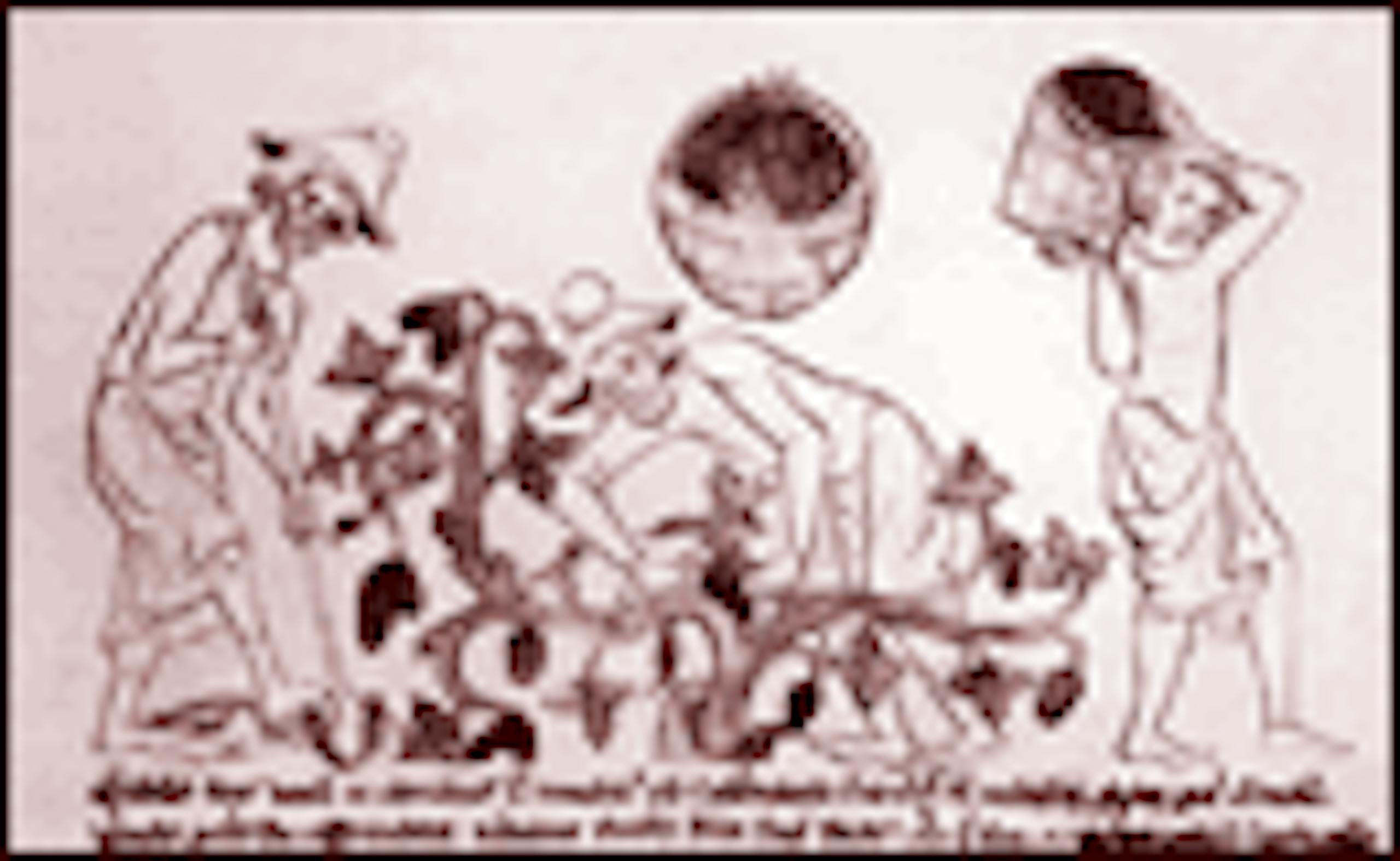
In order to protect Czech wines against foreign competition, Emperor Charles IV, on the 9th January, prohibits the importation of all foreign wines between the feasts of Saint Havel (16th October) and Saint George (24th April). During this period only the consumption of Czech wine is allowed. Close on the heels of this decree comes the supposition that Czech wine should only be consumed when young.
In order to protect Czech wines against foreign competition, Emperor Charles IV, on the 9th January, prohibits the importation of all foreign wines
1375 Export of Wine from Znojmo
Emperor Charles IV allows the town of Znojmo to export its wines to Bohemia, Silesia and Lusatia.
1393 Taproom for Foreign Wines in Brno
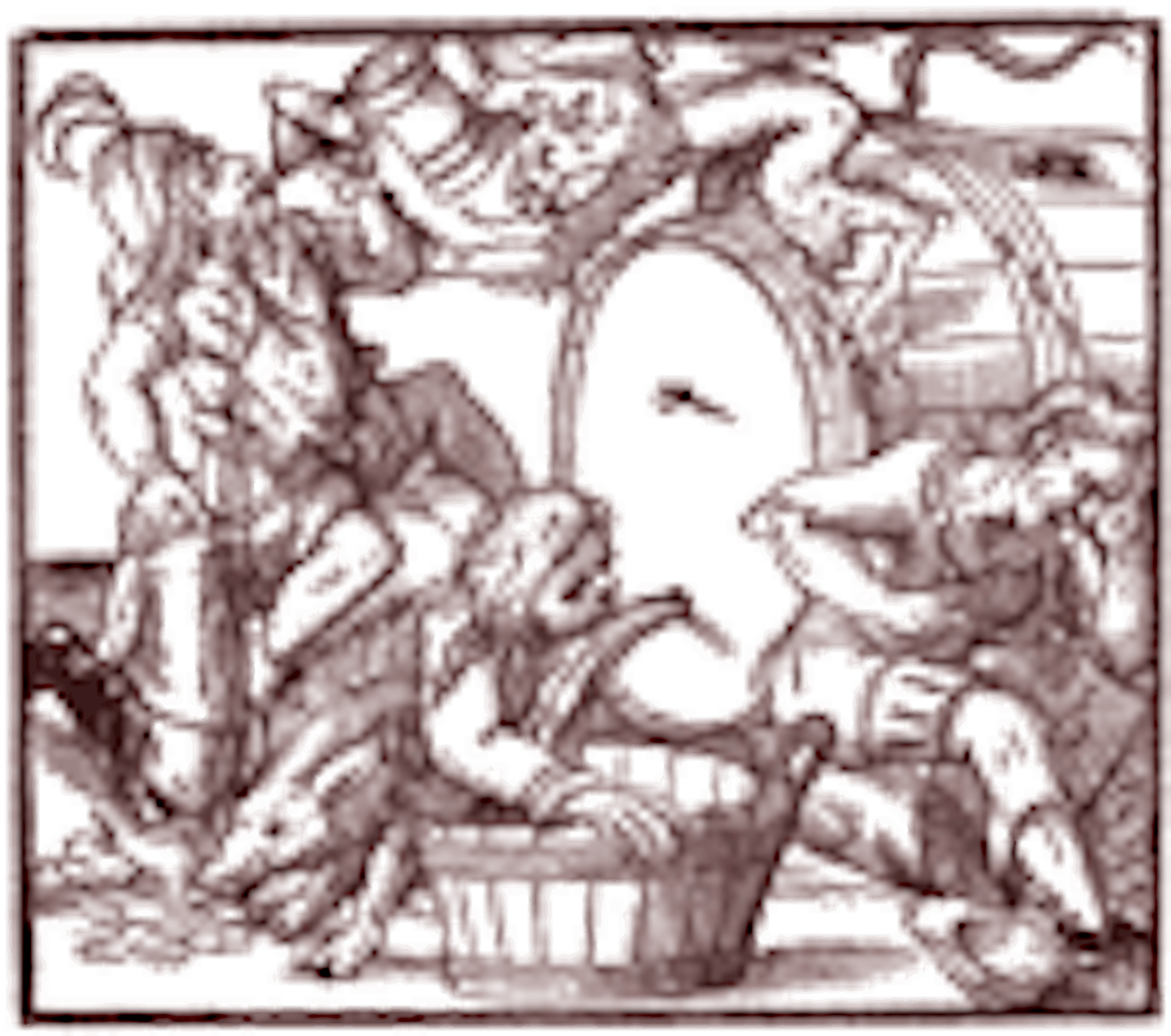
On 23rd May the Margrave Jošt permits the opening of the municipal inn (taproom) where, during the prohibited period between the feasts of Saint Michael (29th September) and Saint George (24th April), Italian wines such as Malvasia, Romani and Rivoli, and some Hungarian and Austrian wines, are allowed to be served.
15th Century

The vineyard area continues to increase in the Czech lands as well as in Moravia principally due to those wealthy citizens with the necessary means to invest into the planting of vineyards on the slopes. The production of wine increases, while the presence of foreign wines on our market starts to be problematic for local production. Winemakers defend themselves by demanding a ban on foreign wines during the winter months while at the same time doing their best to export their wines to more northerly lands. Only quality wines from the south are to be exempt from this ban.
The vineyard area continues to increase in the Czech lands as well as in Moravia
1414 The Liechtenstein Duties Register
The oldest preserved register of the Liechtenstein vineyards is drawn up, documenting a large number of the vineyards around Mikulov and Valtice.
1496 Uniform Remuneration for Vineyard Work
The municipal councils of all Prague towns pass resolutions that remuneration for vineyard work should in all cases be settled only by the burgomaster or town councillor and should be valid for evey vineyard owner. This serves as protection not just against the over-payment of workers in times of greatest demand for manual labour but also the protection of vineyard labourers against extortion.
1497 The Burgomaster's Land Register and Compulsory Controls over Wine Quality
King Vladislav II Jagiello issues important regulations on the 21st July which contain a reminder that every single vineyard has to be listed in the Burgomaster's Land Register. Anyone failing to comply will not be permitted to sell wine in Prague. At the same time the king decrees that: "...should any wines served after the feast of Saint Havel in any quarter of Prague be found to have been adulterated or spoilt by sulphur or other dangerous matter threatening the health of the people, such wines are to be removed and destroyed." This is the oldest ever record on the qualitative control of wine in Europe.
16th Century

There is a resurgence of the vineyard area in both the Bohemian and Moravian countryside. Even less well-off town dwellers now own their own vineyards. Cases concerning wines that have been poorly stored or adulterated multiply. The king has to intervene in order to keep wine from being harmful to health. Disorder has begun creeping into the records of vineyard registers leading to losses for the royal income. For this reason the king calls for a more precise form of registration. More detailed elaborations of the vineyard regulations are drawn up.
There is a resurgence of the vineyard area in both the Bohemian and Moravian countryside.
1515 More Detailed Vineyard Rules and Regulations for Prague
New detailed vineyard rules and regulations for Prague are issued, containing 21 principal items on the relationship between vineyard owners, the vintners (the specialised foreman who organises the vineyard work and takes on labour) and the labourers themselves. No-one is allowed to take on more day workers than he has rows of vines. Everyone has to begin work at the same time in the morning. It is incumbent on the winemaker to allow the day labourers sufficient space between them so as not to obstruct one another with their elbows. Women are to be paid 2 coins fewer than men. Nobody is permitted to take a break in the morning or for lunch before the overseer in charge blows a trumpet as the given sign. The same overseer will blow the trumpet again in the evening to signal the end of the working day. The daily remuneration is to be decided by the Burgomaster, and each proprietor has to pay the same wages. During the process of grape pressing women are forbidden from entering the press rooms. The Burgomaster is empowered to carry out frequent checks in the vineyards to control how the work is being undertaken. The vineyard owners have to gather up and remove all vine pests, such as insects and larvae, and those who fail to comply are to be subject to heavy fines. The vineyard workers are not permitted to hunt game. Those persons owning their own vineyards are not allowed to seek employment as vineyard hands in the vineyards. Vineyard workers from one town are not allowed to work in any other. Eleven years later, in 1526, these vineyard rules would be extended by further amendments, mainly prohibiting imports of foreign wines into Prague during the winter months and mixing them with the local Prague wines. The regulations further decree that the city of Prague, which has 700 hectares under vine, has a duty to provide many Prague citizens with work in the wine trade.
New detailed vineyard rules and regulations for Prague are issued, containing 21 principal items on the relationship between vineyard owners, the vintners
1539 Appeal to Have the Import of Moravian Wine into Austria Banned
Austrian vintners request that Ferdinand I ban the import of Moravian wines into Austria. The Moravians are protecting themselves against the strong competition of Austrian and Hungarian wines imported into Moravia, by exporting their wines into Austria.
1558 The Document "The Vineyard Positioning and the Manner of Cultivation of Vines in Order to Achieve the Best Results"
Jan Had, the Old Town Prague scholar, publishes the first specialist book on viticulture and vinification entitled The Vineyard Positioning and the Manner of Cultivation of Vines in Order to Achieve the Best Results. This work describes the characteristics of the grape varieties cultivated at that time, which were principally Vídeňka (Weisser Heunisch), Běl (Gelber Heunisch), Klenice (Goher), Muškatel (Muscat Blanc), Němčina (Pinot Gris), Bronišť (Weisser Traminer), Běloočko (Topol) The publication would subsequently be translated into German in Meissen.
1574 New Vineyard Planting in Mikulov
Adam Dietrichstein buys the Mikulov estate and dedicates his best efforts to further vineyard planting. He builds new cellars at the château and, to fill them, stipulates that payments of taxes be paid in the form of wine.
1575 The Moravian Government Assembly takes Protective Measures to Save the Export of their Wines
The Moravian government assembly introduces strict new measures against Austrian wine merchants, going so far as to ban the transportation of Austrian wines through Moravian territory, unless Moravian wines are allowed into Austria.
1583 Emperor Rudolf II Reprimands Vineyard Owners
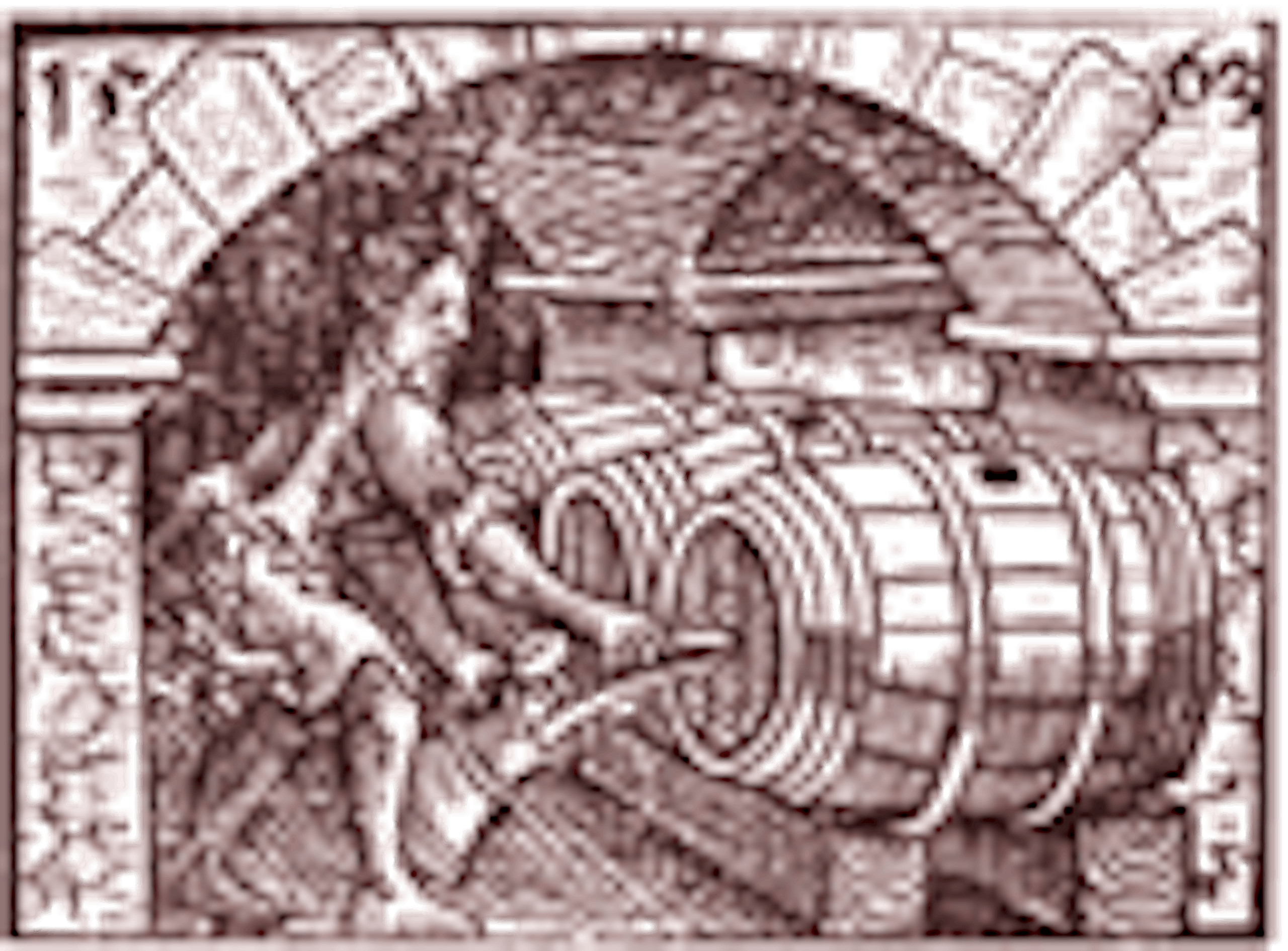
Further disorder comes to light in the payment of land taxes (Bergrecht) due to the king from the vineyards. Until this time vineyard owners have paid dues to the king by way of 8 pints of wine from one row of vines (15.5 litres). The tax represents 96 white coins, which comes to 13 Bohemian groschen and 5 white coins (or 32 kreutzers). But from now the emperor is demanding monetary payments instead. Viticulture in Prague experiences a boom, but with sales of vineyards fast accelerating, the Emperor is still suffering a loss of revenue due to the disorder still prevalent in the vineyard registrations.
1590 Emperor Rudolf II Issues Viticultural Instructions
This comprehensive set of instructions on viticulture contains 36 articles dealing with a whole range of problems relating to the wine trade and, in particular, imports of foreign wines. The emperor demands: "that wines should be preserved in such a manner as they were originally grown" and warns against wine adulteration, i.e. mixing Czech wines with foreign wines. The tainted wine would in future be confiscated from all those who disobeyed.
1591 Jiřík Gerl of Gerlstein publishes his Vinitorium
In his Vinitorium this Prague mathematician describes vineyard planting, the cultivation of vines and wine production. He also describes his own invention, a device for measuring the volume of wine remaining in a barrel.
1595 Exportation of Wine to Saxony
The Litoměřice customs register books show the increased volume of exports of Bohemian wine to neighbouring Saxony. Exports are increasing due to the fact that Rudolf II repeatedly bans all imports of wine into Prague from Mělník, Litoměřice and Louny because of overproduction of wine from Prague's own vineyards..
17th and 18th Centuries
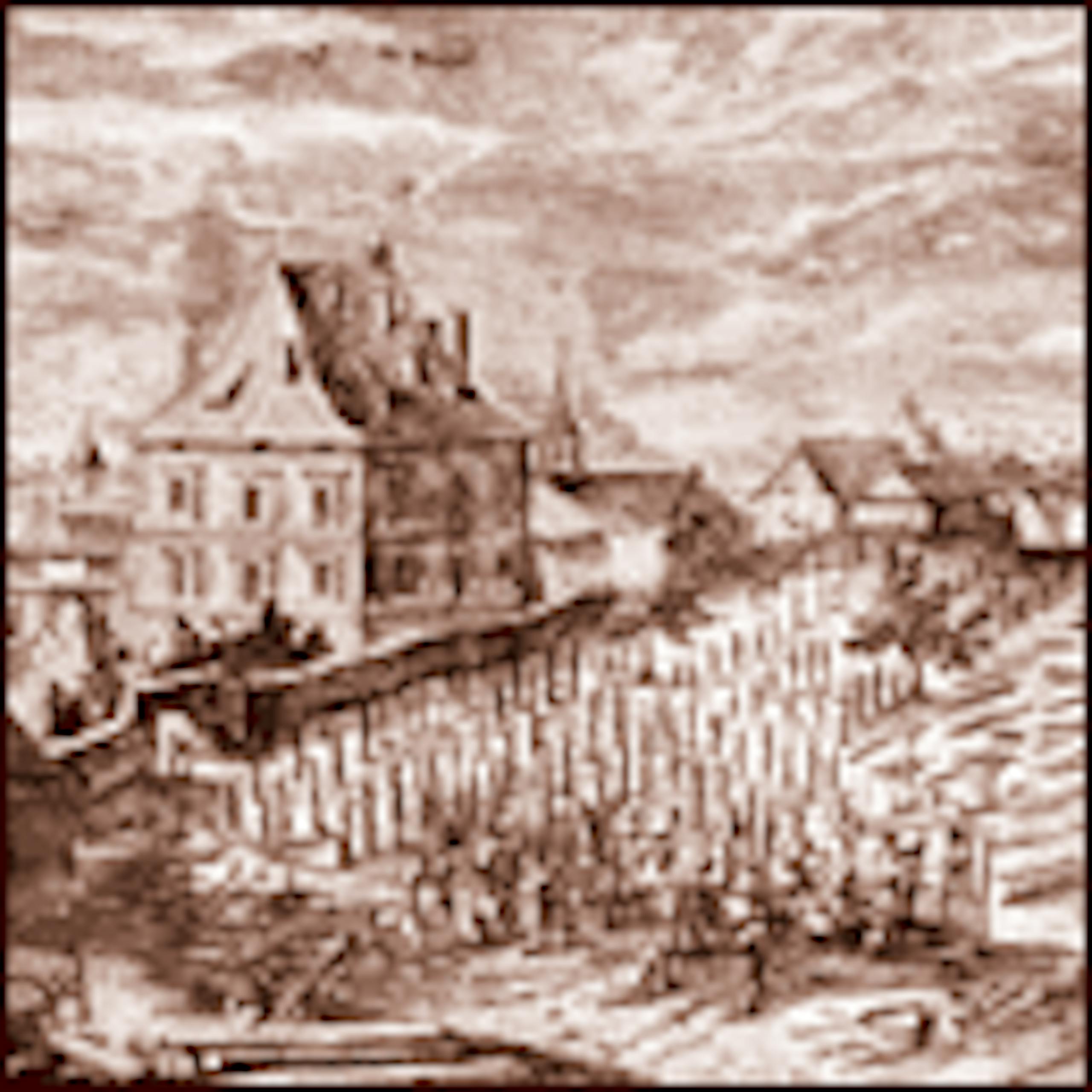
The vineyard area in both the Czech lands and Moravia reaches its peak. In certain years the over-production of wine is so great that it becomes impossible to place it on the home market. Winemakers therefore seek to sell wine abroad. The profitability of urban vineyards is rapidly declining though, especially in Prague, where local as well as foreigners are doing their utmost to sell their own wines. The number of vineyards being sold off shoots up, not only in Prague but also in the district of Litoměřice. The cultivation of vineyards is in severe decline, crops are down.
The vineyard area in both the Czech lands and Moravia reaches its peak.
1600 Export of Moravian Wine to Poland
The popularity of Moravian wines in Poland is on the increase. In the year 1600, 864.5 hogsheads of Moravian wine are sold on the Krakow market, whilst in 1609 this reaches a total of 1,431 hogsheads.
1619 The First Strike by Vineyard Workers
Yields of grapes from the inadequately cared-for vineyards in Prague falls, causing wage conditions to deteriorate rapidly. It provokes a strike of the several thousand urban poor who are employed in the vineyards of Prague.
1654 Inland Revenue
According to the Inland Revenue and the Register of Communes and Communal Land, Bohemia had 3,336 hectares of land under vine prior to the Thirty Years War, of which 11% lay fallow after the war, especially in the areas surrounding towns.
1678 Vineyard Register

The Land Registry records show the development of the areas under vine in Moravia before the Thirty Years' War. There were a total of 18,328 hectares of vineyard plantings. Of this 6,788 hectares were in the first category, or 38.35% of total planting; a further 8,574 hectares in the second category, or 44.44% of total planting, and finally 2,339 hectares of the third category, representing 13.21%. The district of Brno itself had 12,268 hectares, of which 60% were abandoned, whilst the district of Uherské Hradiště had 2,552 hectares, which meant 25% were lying fallow.
1748 Vineyard Renewal in Moravia
The vineyards of Moravia have, to a large extent, been renewed and the total area under vine now amounts to 16,616 hectares, a figure which continues to increase throughout the eighteenth century.
1763 Austrian Vintners Apprehensions at the Competition from Moravian Wines
Austrian winemakers request Maria Theresa to take substantial measures to curb new vineyard plantings in Moravia as Moravian wines represent fierce competition for them.
1783 and 1784 Letters Patent of Emperor Josef II
![]()
In 1783 the Austrian emperor and Czech king Josef II abolishes all the local Bergrecht laws and the activities of the wine regulation court in Moravia. At the same time he issues a new official set of vineyard regulations for Moravia. The imperial patent of Joseph II from the year 1784 permits everyone to sell in their own home groceries, wine and fruit juice which they themselves have produced. So began "under the bush" wine sales, as seen to this day in neighbouring Austria (Heurigen) or Hungary.
1784 Classification of Moravian Vineyards and Wines
Řehoř Volný classifies Moravian wines according to quality. In the first class stand the wines of Sedlec, Mikulov, Popice, Dolní Dunajovice and Velké Pavlovice. The wines from Rakvice, Zaječí, Přítluky, Pouzdřany, Věstonice, Velké Bílovice and Němčičky are placed in class II. In the third class are the wines of Křepice, Nosislav, Velké Němčice, Židlochovice, Dolní Bojanovice and Prušánky.
19th and 20th Centuries
![]()
The pandemonium caused by continual wars has seen a good part of the population annihilated and many of those left find it necessary to leave these lands. The decline in population and the affairs of war leave their mark on the Czech and Moravian vineyards. City dwellers lose interest in the renovation of their vineyards and instead dedicate themselves to the practice of business or trade. The greatest losers are the country poor, whom the vineyards had always provided a welcome source of income.
The pandemonium caused by continual wars has seen a good part of the population annihilated and many of those left find it necessary to leave these lands.
1837 Vineyard Area in Moravia Drops
Moravia still has 15,000 hectares under vine but this area is constantly on the decrease. By the beginning of the twentieth century all that would remain will be 8,000 hectares. The vineyards of Bohemia are disappearing even faster and there are only 1800 hectares remaining.
1848 Lack of Interest in Wine and Vineyards
Serfdom is abolished and the break-up of the landed estates helps release the workforce from the land. Industrialisation is on the march and the new generations of industrial workers show a preference for beer and spirits. The consumption of wine is rapidly decreasing as is that of lamb and mutton, which are substituted by pork. The rapid decline in vineyard plantings is also due in part to the abolition of customs with Hungary and Austria. Moravian wines find themselves unable to compete with cheaper Hungarian wines. Agriculturists lose interest in their vineyards and return to the cultivation of industrial crops such as sugar beet.
1882 Mělník Wine Academy
![]()
Patriotic enthusiasm penetrates all sectors of activity. Many activists are doing their utmost to improve the training of capable Czech and Moravian specialists in the art of winemaking. A wine- and fruit-growers' academy is established in Mělník. In Moravia a similar Academy is founded in 1895 in Lednice. Other schools of lower academic standing have previously been set up in Moravia at: Znojmo (1868), Valtice (1873), Bzenec (1855), Mikulov (1903) and Klobouky (1921).
1890 Phylloxera in Moravia
The vine louse Phylloxera Vastatrix (Viteus vitifolii) makes its first appearance in Moravia. The first discovery is made in Šatov in the Znojmo district. In 1900 it appears in Mikulov and Dolní Dunajovice, in 1901 in Perná, in 1902 in Horní Věstonice and Bavory and thereafter spreads throughout Moravia with devastating effect. This dangerous louse sucks out the young roots of a vine. Consequently these rot away causing the plant to wither and die. The one reliable protection is to graft vines onto resistant rootstock. Phylloxera was first brought to France from America in 1860. It will not reach to the Czech lands until as late as the year 1970.
1907 The Magazine "Vinařský obzor"
![]()
The Land Association of Moravian Vintners is founded in Brno (1905) and a specialist periodical "Vinařský obzor" (The Vintners' Horizon) is published for the first time in Velké Pavlovice (1907), with A. Horňanský as editor. The publication continues to this day.
1930 Moravian Vineyard Area at its Lowest
The area under vine has by now decreased further. In Moravia this represents 3,780 hectares. Through vineyard renewal an area of 7,000 hectares is achieved by the year 1937. In 1960 this still remains at only 6,781 hectares. The first signs of expansion come during the 1960s and 1970s and the total area rises gradually to 14,019 hectares by 1980. After 1990 the downward trend returns and in 1997 there are 11,183 hectares of agricultural land under vine.
1965 Vineyard Renewal through High Training of Vines
In the second half of of the 1960s vineyard renewal takes on a faster tempo and gradually the larger agricultural concerns begin to plant vineyards in rows 3 metres wide, using high vine-training methods in line with the example set by Austrian winemaker Professor Lenz Moser. Moser's training (as this method of training vines was then known) allows for greater vineyard mechanisation and a consequent enlargement of the vineyard whole in both state farms and agricultural cooperatives. Since 1970 yields in the replanted vineyards have stabilised at 6-7 tons of grapes per hectare of land and the total harvest of grapes stands between 70-80,000 metric tons per annum.
1995 Wine Laws
In 1995 Wine Act No. 115/1995 Sb is published, on viticulture and winemaking practices. Almost immediately afterwards, in 1996, preparatory work begins on the new wine laws. Firstly, the wine section of the EU regulations is translated into the Czech language, which is then followed by its incorporation into the above mentioned Wine Act. At the same time, the first practical information regarding the effectiveness of the said Act is being gathered. The resulting Amendment Act 216/2000 is published in the Collection of Laws (Sb.). Our wine laws are gradually being conformed to the provisions of the EU laws. The orginal draft of the Amendment to the Wine Act also contained provisions for establishing the Wine Fund. This fund, however, does not come into existence until 2002 by Act No. 50/2002 Sb.
21th Century
2004 Accession of the Czech Republic into the European Union
In 2004 the Act No. 321/2004 Coll. on viticulture and viniculture was issued, later followed by Decrees No. 323/2004 Coll. and No. 324/2004 Coll., by which the legislation of the Czech Republic in this area was fully in accordance with the norms of the European Union. (More detailed information is available in the item on Wine Legislation.)
Expansion of viticulture in the second half of the 20th century and at the beginning of the third millennium
The structural changes in Czechoslovak agriculture in the second half of the 20th century brought with them the additional necessity of converting our viticultural practices to a system for mass production which was capable of ensuring the profitability of agricultural produce in the framework of mixed agricultural combines. This was achieved thanks to the establishment of new vineyards on positions accessible to the mechanised means of vineyard work and simultaneously by speeding up the expansion in processing capacity adapted to the production of varietal wines of a single type from large territorial units. In this way the origin of the grapes was clearly disregarded, but thanks to a substantial reduction in production costs, the prices for varietal wines were made more accessible to the wider public, which was slowly beginning to return to the consumption of wine.
The Wine Law of 1995 and the wide privatisation that accompanied it which not only affected viticulture but also the production of wine, laid the foundations for an unprecedented boom in this sector. The ever-improving quality of our wines alongside the improvements in the technical intervention in vineyard work and mainly the widespread investment in modern technological equipment for both small and large processing capacities, helped bring a rapid rise in the popularity of wine in general and our white and some red wines especially. The unparalled way in which interest was increased among the general public was the availability of accessible literature as well as television broadcasts on wine, its characteristics and origins. The popularity of wine, not only in Europe, but also here is widely increased by oeno-tourism and special programmes aimed at understanding wine regions and varietal wines with original and guaranteed origin. Discerning consumers are now dedicating more and more well-deserved attention to our wines on the basis of their unique quality.
The rising interest in wine has necessitated a corresponding increase in the vineyard area dedicated to our wines.
The rising interest in wine has necessitated a corresponding increase in the vineyard area dedicated to our wines. With the massive support of the state the vineyard area has risen from 12 thousand hectares to 19 thousand hectares, most of this in Moravia. Not only has the area under vine changed, but also the varietal composition in the vineyards, which now favours the production of quality wine from varieties that today enjoy worldwide popularity. This has also led to the increasing competitiveness of our wines, not just within the EU, but also in countries outside it. The natural conditions prevailing in our wine regions, which lie on the northern limit for grapevine cultivation in Europe, are the precondition for making wines of exceptional quality, which are based on their mineral roundness and the delicate expression of fine aromatic substances. Other than their pleasing taste characteristics they are distinguished by their high content of natural substances beneficial for our health.
Source: Réva a víno v Čechách a na Moravě / Vines and Wine in Bohemia and Moravia
© V. Kraus a kol.
© RADIX, spol. s r.o.
Autor: V. Kraus a kol.